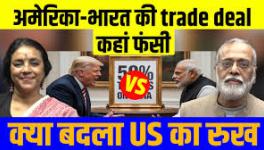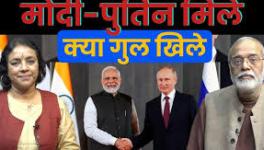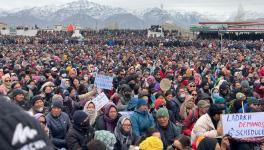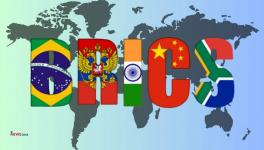Renaming Pacific Command: Rather than Feeling Ecstatic about the Change, India should Tread Carefully
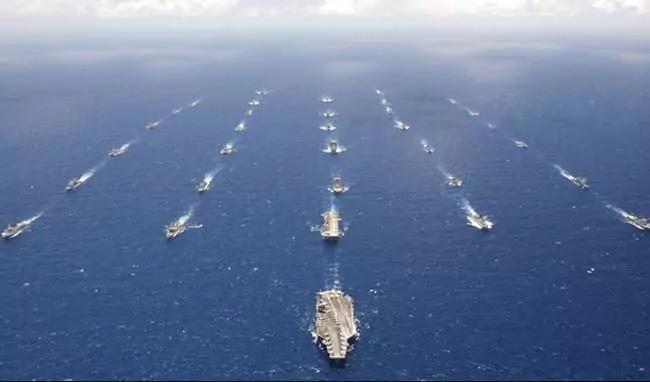
Image Courtesy : NDTV
While announcing the renaming of Pacific Command as Indo-Pacific Command and alluding to China’s Belt and Road Initiative, the US Secretary of State James Mattis said “a region open to investment a free, fair and reciprocal trade, not bound by any nation’s predatory economics or threat of coercion, for the Indo-Pacific has many belts and many roads”. US PACOM, now renamed, is one of the largest of the six combatant commands “standing watch over half of the earth’s surface”. While this renaming is touted as ‘strategically significant’ in that it reflects the growing connectivity between East Asia and Indian Ocean region, there is an inherent incompatibility between the definition of what constitutes the Indian Ocean for India in contrast to the US. That is why, instead of feeling ecstatic over this name change, it is better to tread carefully.
The old PACOM, as well as Indo-Pacific Command, excludes the north Arabian Sea, which falls under US CENTCOM and therefore straddles an area by far one of the most vital interests to India. The US's definition of Indian Ocean also excludes Africa, especially the Indian Ocean Rim states. In other words, were India to sign the pending two foundational pacts Communication Compatibility & Security Agreement (COMCASA) and Basic Exchange and Cooperation Agreement (BECA), even if they are so-called ‘India specific’, it would not cease to find itself at the receiving end of US arm-twisting over issues of direct interest to India. In other words, when India’s vital interests are indeed threatened by US’s extraterritorial sanctions and areas of primary interests in the Indian Ocean, falls outside of Indo-Pacific Command and therefore, raises questions about military proximity with the US. So while the US wants India to join its orbit to counter China, it is lukewarm towards Indian stakes in the Persian Gulf and the Arabian Sea because they are at variance here.
A third of world’s bulk cargo, fifty percent of world’s container traffic and 70% of crude and oil products pass through the Indian Ocean. Seventy-five percent of India’s oil imports (80% of China’s) pass through the Indian Ocean. Strait of Hormuz accounts for more than a third of India’s (40% of China’s) oil imports. In particular, India is threatened by US extra-territorial sanction against Iran because it imperils access to low price oil imports from Iran, jeopardizes India’s investment in Chahbahar Port for trade with Afghanistan, Central Asia, as well as, International North-South Corridor. With this development of shorter and cheaper route, trade with Russia through Iran will be adversely affected. All this without forgetting that the US has been breathing down India’s neck to relax its intellectual property right laws to benefit its own pharmaceutical and other hi-tech corporations to retain their near monopoly profiteering.
Now Indian Maritime Doctrine defines “sea control” as a condition where a defined sea can be used for one’s own purposes and adversary denied use”. If true, who is the adversary here? Is it China when we share a common interest to keep the north Arabian Sea free of impediments and war-like buildup against our common trading partners in the neighbourhood? Or is it the US and its client states, which threaten to step up hostility against countries which are vital to our interests?
Let's look at this another way. India’s foreign policy experts argue that it is not the rise of China that disturbs India but their “unwillingness to consult” or to take into “account concerns of others”. In so far as China has defied ICJ verdict to respect open Sea Lanes of Communication over the South China Sea, there is much to criticize them for breaking the rule-based international order. What does US withdrawal from JCPOA with Iran and the extra-territorial sanctions announced by US of A under CAATSA represent? Where does this fit in? How does Indian military, particularly, navy counter hostile US naval presence in the North Arabian Sea? The US unilateralism and disinterest in what others have to say is a long, very long history. The US has habitually exercised extra-territorial sanctions. So why still insist on becoming a part of the US military alliance and compromise on India’s most vital interest?
The history of this cosying up to the US began in 1990, when India allowed USC-141 heavy transport aircrafts transiting from the Philippines to Gulf, to land, refuel in Indian airfields as part of US war efforts against Iraq. From 1991 onwards, the US pushed out with military-to-military relations and Malabar Exercises began in 1992. In 2002, India agreed to provide naval escorts to the US high-value ships transiting Malacca Strait. In 2009, Indian signed End User Monitoring Agreement under US pressure which is required under US Arms Export Control Act. The US assured India then that their control regime would not be “intrusive” and that they will stay away from Indian military bases. In 2002, the US proposed LEMOA which establishes legally binding commitments to ensure the protection of US personnel, US property and supplies and operations conducted from US bases on foreign territories. And signed the LEMOA in 2016.
If one looks back and weighs the pros and cons of India’s shift to US orbit it would become clear that the US sees India not as one of the pillars of a multi-polar world but as an ally, regional at best, which shares a long disputed border with China, and a potential rival, therefore, fear of China can be stoked to bring India into its orbit. Long and short of this is that renaming something may be a good marketing ploy but in material terms, it brings no benefit to India.
Get the latest reports & analysis with people's perspective on Protests, movements & deep analytical videos, discussions of the current affairs in your Telegram app. Subscribe to NewsClick's Telegram channel & get Real-Time updates on stories, as they get published on our website.









